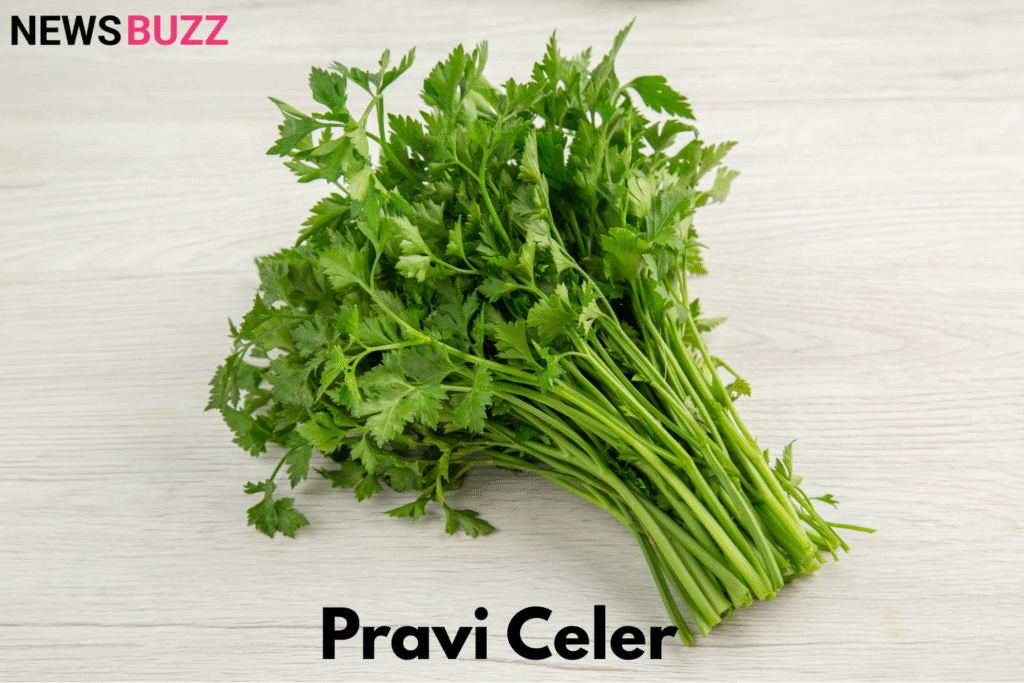Introduction
Pravi Celer, meaning “real celery,” refers to the authentic, naturally grown version of the well-known plant Apium graveolens. It is valued for its crunchy texture, refreshing taste, and wide range of nutritional benefits. Unlike heavily modified or commercially mass-produced versions, Pravi Celer emphasizes traditional cultivation and authentic flavor.
On the positive side, it is packed with vitamins, minerals, fiber, and antioxidants that can improve digestion, reduce inflammation, and support hydration. On the negative side, it can be more expensive, sometimes harder to source, and its strong earthy taste may not appeal to everyone. This balance of strengths and limitations makes Pravi Celer both fascinating and practical for modern diets.
What Is Pravi Celer?
Definition and Characteristics
Pravi Celer describes celery that has been grown in a natural way, often without heavy use of chemicals or genetic modification. It includes both the crunchy green stalks and the aromatic leaves, and in some regions it also refers to the root form, known as celeriac. This version carries a stronger aroma and richer mineral profile compared to bland, supermarket-style celery.
By preserving its original qualities, Pravi Celer keeps its natural medicinal and culinary uses intact. However, its authenticity can also mean it looks less “perfect” in appearance, which might discourage buyers who are accustomed to the uniformity of mass-produced vegetables.
Also Read: Gärningen: Meaning, Context, and Usage in Swedish Language
Cultural and Historical Roots
Celery has been present in food culture for centuries, appearing in Greek, Roman, and Egyptian traditions. In many European households, particularly across Slavic and Balkan countries, Pravi Celer has long been a symbol of purity, healing, and vitality. Families used it not only as food but also as a remedy for cleansing the body and balancing digestion.
This deep cultural significance adds to its value today. At the same time, modern fast-food habits and consumer trends sometimes overshadow these traditions, reducing the recognition that Pravi Celer deserves.
Nutritional Value and Health Benefits
Key Nutrients in Pravi Celer
One of the strongest aspects of Pravi Celer is its nutrient profile. A 100-gram serving is low in calories but rich in water, fiber, and essential micronutrients such as vitamin K, vitamin C, potassium, and folate. It also contains plant compounds like apigenin and luteolin, which function as antioxidants.
These nutrients support bone strength, immune defense, and cardiovascular health. Yet because celery is often viewed as a “basic vegetable,” its true nutritional strength is underestimated, leaving many unaware of the health protection it can provide.
Health Advantages for Daily Life
Pravi Celer supports digestive wellness thanks to its fiber content, easing bloating and promoting bowel health. Its natural phthalides may assist in lowering blood pressure, making it useful for heart health. In addition, its water content helps hydration, while antioxidants fight inflammation that contributes to joint and skin problems.
On the other hand, depending too heavily on celery juice or snacks without a balanced diet can create unrealistic expectations. While beneficial, Pravi Celer is not a miracle cure but a helpful addition to an overall healthy lifestyle.
Culinary Uses and Everyday Recipes
Versatility in the Kitchen
Pravi Celer shines in both raw and cooked forms. It can be chopped into salads for crunch, blended into soups for depth, or juiced for refreshing drinks. Its leaves add herbal notes to stews, and its root, celeriac, can be roasted, mashed, or turned into creamy soups.
This wide culinary range makes it ideal for creative meals. Still, its strong taste may be too intense for those who prefer mild vegetables, and some recipes require extra preparation time to soften its fibrous texture.
Recipe Inspiration
Simple snacks include pairing celery sticks with hummus, nut butter, or yogurt-based dips. In cooking, it can be combined with onions and carrots as a flavor base for sauces and stews. Fresh juice mixes of celery with apple, cucumber, and ginger offer a natural wellness boost.
These recipes show how easily Pravi Celer adapts to both traditional and modern diets. But as with any ingredient, taste preferences and cooking skills determine how much people will truly enjoy it.
Growing and Sustainability
Home Cultivation of Pravi Celer
For gardening enthusiasts, Pravi Celer can be grown at home in nutrient-rich soil with consistent watering. It thrives best in cool conditions and needs time—usually several months—to mature. Patience is rewarded with flavorful, crisp stalks that surpass store-bought alternatives.
This self-grown version offers both satisfaction and superior nutrition. The drawback is that growing celery requires attention, space, and time, which may not be convenient for everyone living in urban settings.
Environmental and Economic Impact
Pravi Celer, especially when farmed organically, supports biodiversity, soil health, and sustainable food systems. It requires relatively little fertilizer and grows well alongside other crops. For local farmers, it can be a valuable product that strengthens community markets.
However, organic or locally grown Pravi Celer can come at a higher price. While this cost reflects its quality, it may limit access for budget-conscious households.
Quick Bio: Pravi Celer
| Aspect | Details |
|---|---|
| Name | Pravi Celer (Real Celery) |
| Scientific Name | Apium graveolens |
| Nutrients | Vitamins K & C, potassium, folate, fiber, water |
| Health Benefits | Digestion aid, blood pressure control, hydration, anti-inflammation |
| Culinary Uses | Salads, soups, juices, stews, roasted root |
| Cultural Value | Traditional food in European and Mediterranean diets |
| Challenges | Strong flavor, higher cost, slower cultivation |
Positive and Negative Aspects
Positive Sides
- Rich nutritional profile for health and wellness.
- Versatile in cooking and usable in multiple forms.
- Supports hydration, digestion, and heart health.
- Sustainable farming practices promote biodiversity.
Negative Sides
- Strong flavor may not appeal to all.
- Organic or authentic versions can be costly.
- Longer preparation and growth times compared to other vegetables.
- Benefits can be overstated if relied upon as a “miracle food.”
Also Read: DigitalConnectMag.com: A Complete Guide to the Tech and Business Platform
Conclusion
Pravi Celer is both a simple vegetable and a powerful ally in nutrition. Its positive aspects include high vitamin content, digestive support, and diverse culinary uses, while its negatives include stronger taste, limited availability, and higher cost in some markets.
By understanding both sides, consumers can appreciate Pravi Celer as more than just a salad ingredient—it is a symbol of authentic food culture, a sustainable crop, and a functional food for modern living.
FAQs About Pravi Celer
1. What does “Pravi Celer” mean?
It means “real celery” and refers to authentic, naturally grown celery.
2. How is Pravi Celer different from regular celery?
It usually has stronger flavor, richer nutrients, and is often grown organically.
3. What health benefits does it provide?
It supports digestion, reduces inflammation, improves hydration, and can help with blood pressure.
4. Can I grow Pravi Celer at home?
Yes, with nutrient-rich soil, regular watering, and patience, you can grow it in your garden.
5. Is celery juice from Pravi Celer healthier?
Yes, it is nutrient-dense and hydrating, but it should be part of a balanced diet rather than a sole remedy.



